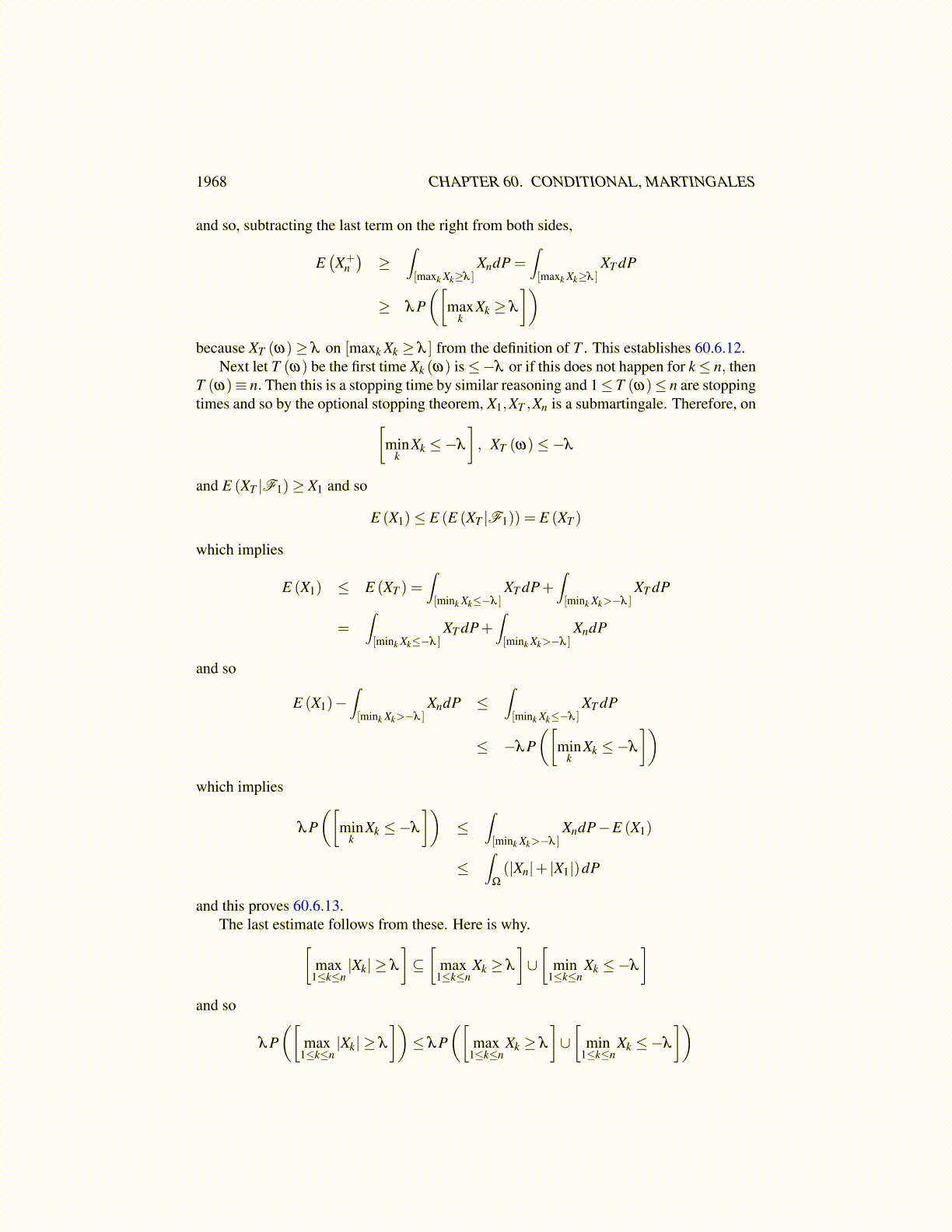
1968 CHAPTER 60. CONDITIONAL, MARTINGALES
Now note that U [a,b]M is at least as large as the number of upcrossings of {X (k)} for k ≤M.
This is because every time an upcrossing occurs, it will follow that X (τ2k+1)−X (τ2k)> 0and so a one will occur in the above sum which defines U [a,b]
M . However, this might be largerthan the number of upcrossings. The above discussion has proved the following upcrossinglemma.
Lemma 60.6.1 Let {X (k)} be a nonnegative submartingale. Let
U [a,b]M ≡ lim
ε→0
n
∑k=0
X (τ2k+1)−X (τ2k)
ε +X (τ2k+1)−X (τ2k), 2n+1 = M
ThenE(
U [a,b]M
)≤ 1
b−aE (X (M))
Suppose that there exists a constant C ≥ E (X (M)) for all M. That is, {X (k)} is boundedin L1 (Ω). Then letting
U [a,b] ≡ limM→∞
U [a,b]M ,
it follows that
E(
U [a,b])≤C
1b−a
The second half follows from the first part and the monotone convergence theorem.Now with this estimate, it is easy to prove the submartingale convergence theorem.
Theorem 60.6.2 Let {X (k)} be a submartingale which is bounded in L1 (Ω) ,
∥X (k)∥L1(Ω) ≤C
Then there is a set of measure zero N such that for ω /∈ N, limk→∞ X (k)(ω) exists. IfX (ω) = limk→∞ X (k)(ω) , then X ∈ L1 (Ω) .
Proof: Let a < b and consider the submartingale (X (k)−a)+ . Let U [0,b−a] be the ran-dom variable of the above lemma which is associated with this submartingale. Thus
E(
U [0,b−a])≤ C
b−a
It follows that U [0,b−a] is finite for a.e. ω . As noted above, U [0,b−a] is an upper bound tothe number of upcrossings of (X (k)−a)+ and each of these corresponds to an upcrossingof [a,b] by X (k). Thus for all ω /∈ Na,b where P
(Na,b
)= 0, it follows that
U [0,b−a] < ∞.
If limk→∞ X (k)(ω) fails to exist, then there exists a < b both rational such that
lim supk→∞
X (k)> b > a > lim infk→∞
X (k)
Thus ω ∈ Na,b because there are infinitely many upcrossings of [a,b]. Let
N = ∪{
Na,b : a,b ∈Q}
Then for ω /∈ N, the limit just discussed must exist. Letting X (ω) = limk→∞ X (k)(ω) forω /∈ N and letting X (ω) = 0 on N, it follows from Fatou’s lemma that X is in L1 (Ω) .